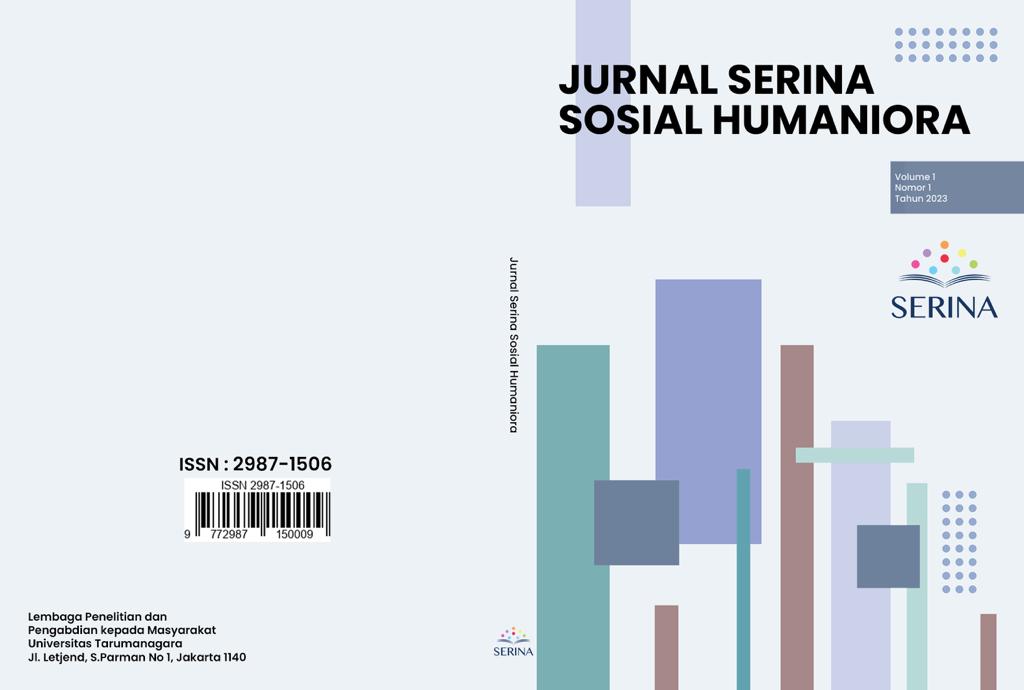TOWNHALL MEETING: MEETING SANTAI, AJANG BERKENALAN DAN MEMBANGUN KEAKRABAN PESERTA MAGANG
Main Article Content
Abstract
ABSTRACT
Every company has its own problems and challenges. During four months of internship at an educational platform startup in Indonesia, several problems were identified, namely where the company must try so that its interns can get to know each other and get to know more about the divisions in the company and the need to instill a corporate culture. To handle this, we need a place for interns to get to know each other, get to know more about the divisions in the company, and as a means to instill corporate culture, the solution is to hold a Townhall event. Townhall is an internal company event where every apprentice and mentor can gather together, present the results of activities that have been and will be carried out, discuss, and give each other feedback, either suggestions, appreciation, or criticism of the work that has been done by each division.With this event, intern can get to know, discuss, and interact with fellow intern and mentors as well as get to know more about the divisions in the company, as well as a means for the company to instill corporate culture. This Townhall event has been running effectively, but there are several evaluations and suggestions that must be followed up, namely redesigning the Townhall event so that it can be carried out face-to-face, designing the schedule so that it is not monotonous and boring, and making an evaluation form to see how far this event encourages interns to get to know each other and the effectiveness of this event as a place for planting corporate culture
Keywords: Townhall, intern, communication, company value
ABSTRAK
Setiap perusahaan tentu memiliki beragam permasalahan dan tantangan masing-masing. Salah satu permasalahan yang berhasil diidentifikasi setelah empat bulan menjalani magang adalah peserta magang yang kurang mengenal satu sama lain. Sementara perusahaan harus berusaha agar peserta magangnya bisa saling mengenal satu sama lain dan lebih mengenal tentang divisi-divisi di perusahaan serta perlunya untuk menanamkan budaya perusahaan. Untuk mengatasi hal ini, dibutuhkan suatu wadah yang dapat menjadi jembatan perkenalan para peserta magang, mengenal lebih dalam divisi yang ada di perusahaan, dan sebagai sarana untuk menanamkan budaya perusahaan. Solusinya adalah dengan diadakannya acara Townhall, yaitu acara internal perusahaan dimana setiap peserta magang dan mentor dapat saling berkumpul, mempresentasikan hasil kegiatan yang sudah dan akan dilakukan, berdiskusi, saling memberi umpan balik, baik saran, apresiasi, maupun kritik atas pekerjaan yang telah dilakukan oleh setiap divisi. Berkat terselenggaranya acara ini, peserta magang dapat lebih mengenal, berdiskusi, dan berinteraksi dengan sesama peserta magang dan mentor, serta mengenal lebih dalam mengenai divisi-divisi yang ada di perusahaan. Kegiatan ini juga berperan sebagai sarana perusahaan dalam menanamkan budaya perusahaan. Acara Townhall ini sudah berjalan dengan efektif, namun ada beberapa evaluasi beserta saran yang harus ditindaklanjuti, yaitu dengan mendesain ulang acara Townhall agar dapat dilaksanakan secara tatap muka, merancang susunan acara agar tidak monoton dan membosankan, serta membuat form evaluasi untuk melihat sejauh mana acara ini mendorong peserta magang untuk mengenal satu sama lain dan efektivitas acara ini sebagai wadah penanaman budaya perusahaan.
Kata Kunci: Townhall, Magang, Komunikasi, Budaya perusahaan
Article Details
References
Aktar, A., & Pangil, F. (2017). Antecedents and consequences of employee engagement: A conceptual study. IOSR Journal of Business and Management, 19(06), 54–67. https://doi.org/10.9790/487x-1906065467
Caldwell, C., Licona, B., & Floyd, L. (2015). Internal marketing to achieve competitive advantage. International Business Management. https://doi.org/10.3968/%X
Crim, D., & Seijts, G. (2017, December 4). What engages employees the most or, the ten CS of employee engagement. Ivey Business Journal. Retrieved November 17, 2022, from https://iveybusinessjournal.com/publication/what-engages-employees-the-most-or-the-ten-cs-of-employee-engagement/
Freeman, R. E. (2010). Strategic management: A stakeholder approach. Cambridge, NY: Cambridge University
Lockwood, N. R. (2007). Leveraging Employee Engagement for competitive advantage. SHRM Research Quarterly. http://doi.org/10.1109/HICSS.2007.324
Macey, W. H., & Schneider, B. (2008). The meaning of employee engagement. Industrial and Organizational Psychology, 1(1), 3–30. https://doi.org/10.1111/j.1754-9434.2007.0002.x
Parent, J. D., & Lovelace, K. J. (2018). Employee engagement, positive organizational culture and individual adaptability. On the Horizon, 26(3), 206–214. https://doi.org/10.1108/oth-01-2018-0003
Pfeffer, J. (1998). Seven practices of successful organizations. California Management Review, 40(2), 96–124. https://doi.org/10.2307/41165935
Robison, J. (2022, September 8). Building engagement in this economic crisis. Gallup.com. Retrieved November 16, 2022, from https://news.gallup.com/businessjournal/115213/building-engagement-economic-crisis.aspx
Saks, A. M. (2006). Antecedents and consequences of employee engagement. Journal of Managerial Psychology, 21(7), 600–619. https://doi.org/10.1108/02683940610690169
Schaufeli, W. B., & Bakker, A. B. (2004). Job demands, job resources, and their relationship with burnout and Engagement: A multi-sample study. Journal of Organizational Behavior, 25(3), 293–315. https://doi.org/10.1002/job.248
Schaufeli, W. B., & Bakker, A. B. (2010). Defining and measuring work engagement : Bringing clarity to the concept. In Work engagement : A handbook of essential theory and research. (pp. 10–24). essay, Psychology Press.
Wagner, R., & Harter, J. K. (2006). 12: The great elements of managing. Washington,
DC: The Gallup Organization.
Wagner, R., & Harter, J. K. (2006). 12: The great elements of managing. Washington,
DC: The Gallup Organization.
Wagner, R., & Harter, J. K. (2006). 12: The great elements of managing. Washington,
DC: The Gallup Organization.
Wagner, R., & Harter, J. K. (2006). 12: The great elements of managing. Washington,
DC: The Gallup Organization.
Wagner, R., & Harter, J. K. (2006). 12: The great elements of managing. Washington,
DC: The Gallup Organization.
Sirisetti, S. (2012). Employee engagement culture. The Journal of Commerce, 4(1), 72–74. https://doi.org/https://web.archive.org/web/20180421013055id_/http://joc.hcc.edu.pk/articlepdf/JOC201263_72_74.pdf
Wagner, R., & Harter, J. K. (2006). 12: The great elements of managing. Washington, DC: The Gallup Organization.
Weinzimmer, L., Robin, J., & Michel, E. (1970). The measurement of strategic orientation and its efficacy in predicting financial performance. Journal of Business Strategies, 29(2), 81–98. https://doi.org/10.54155/jbs.29.2.81-98.



